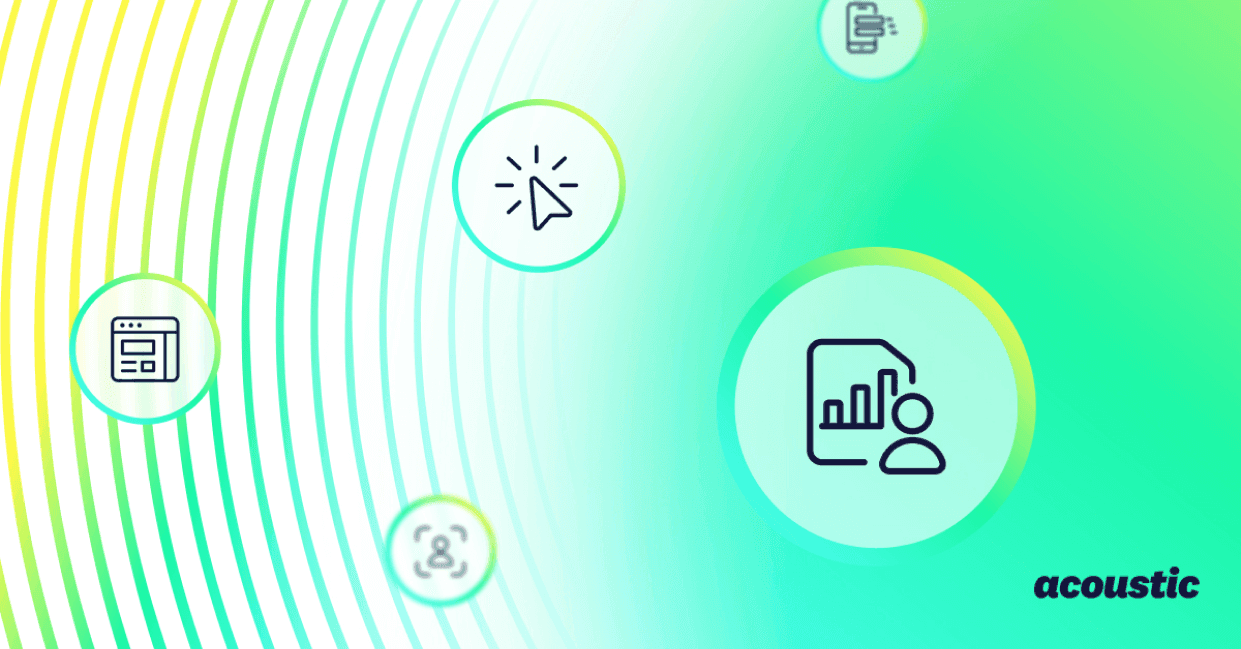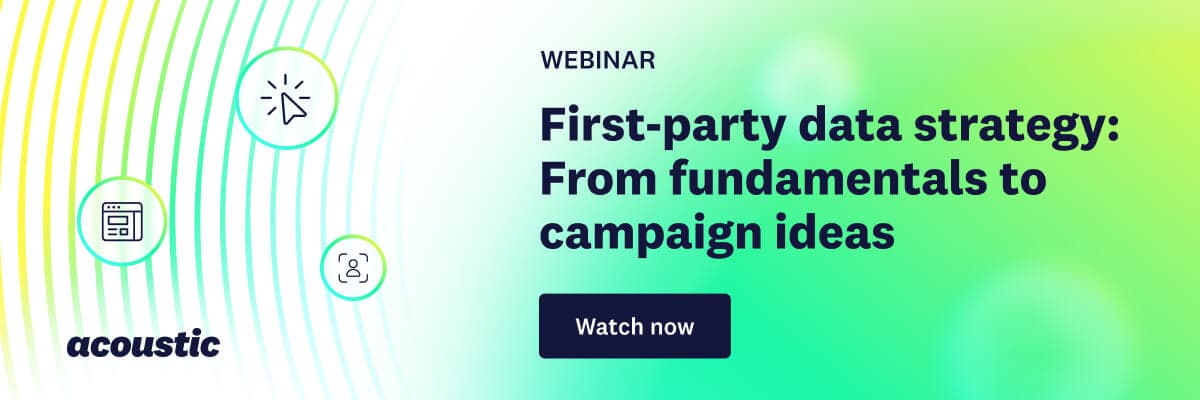Engaging with customers on a deeper level is a top priority for marketers. One of the best ways to create meaningful connections is with a first-party data strategy. As marketers, we all understand the value of data, but there are real challenges in how marketers can use first-party data effectively. In this article, we’ll review tips to help marketers unlock the full potential of first-party data and drive meaningful customer engagement – including some campaign ideas to try.
What’s the value of first-party data?
First-party data is collected directly from your audience through website interactions, email sign-ups, or purchase history, which makes it more accurate while remaining compliant with privacy laws. With increasing privacy regulations and more privacy-conscious customers, first-party data is essential for personalized marketing and is proving to be invaluable for building trust and deepening customer relationships.
Why aren’t marketers leveraging first-party data?
While most marketers are aware of the value of first-party data, many face challenges that prevent them from making the most of this opportunity. The most common challenges include:
Data collection: Since different devices, tools, and platforms collect and store data differently, marketers can struggle to gain a unified view of their customers and access the right insights needed to inform decision-making.
Data management and data gaps: Marketers often spend more time than they should trying to ensure the data they are collecting is accurate, relevant, and thorough.
Data activation: As a marketer, it doesn’t help to just collect the data, you need to be able to use it in the campaign process.
Technology hurdles: Integrating and analyzing data from various sources requires significant investment and a dedicated technical resource.
How can marketers overcome first-party data challenges?
1. Understand your platforms and where the data connects, so you fully understand what is at your disposal.
2. Collaborate with your tech team to ensure you can use the data for real-time personalization.
3. Analyze the data to make sure it’s accurate and providing the information you actually need.
4. Build trust with your customers by offering value in exchange for data, such as personalized offers and experiences.
6 first-party data campaign ideas
First-party data can be used to level-up your campaign strategy, as it provides the opportunity to:
- Create highly targeted personalized campaigns.
- Develop dynamic content and message personalization using the contact’s profile information.
- Target segments with relevant offers using behavioral data.
- Use customer data to understand which customers are at risk of dropping-off and create retention campaigns.
With that in mind, here are some ideas for campaigns you could run leveraging first-party data:
1. Value-driven loyalty program: Create a program that incentivizes customers to share more data in exchange for rewards and use this data to personalize offers so you can drive more engagement and loyalty.
2. VIP loyalty campaign: For those with an existing loyalty program, build a campaign focused on VIP customers and give them access to your new releases or sale items before the general public.
3. Seasonal email campaign: At the start of a new season, send emails based on each contact’s browsing behavior, in-market index, product interest, spend tier, past purchases, and style preferences so that each message drives more engagement.
4. Subscription sign-up: A lot of customers will repeatedly make single purchases but not sign-up for the brand’s subscription. Trigger emails or messages when it’s time for a customer to reorder the product. The email can include a message reminding them of the benefits of setting up a subscription with an offer for a free sample of a product they are showing the most interest in at that time.
5. Base campaigns on life moments: Build journeys based on each customer’s life stage so you can trigger personalized campaigns for each type of customer.
6. Personalized product recommendations: Get granular in your targeting by triggering emails and messages to customers based on the level of product interest and brand engagement a customer is showing.
While implementing a first-party data strategy comes with its challenges, the potential to drive your campaign performance is immense. To learn more about implementing a successful strategy, watch an instant replay of our webinar, First-party data strategy: From fundamentals to campaign ideas.

